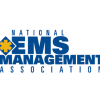Pain is a major reason why people call EMS, yet paramedics administer painkillers at “inappropriately low rates,” according to a study published online Sept. 12 in Prehospital Emergency Care.
Yale University researchers interviewed 15 experienced paramedics from five rural and urban EMS agencies in three New England states and found a widespread reluctance to administer opioids. Reasons for the paramedics’ reluctance included:
- Uncertainty whether they should control the pain or just “take the edge off”
- Worries that they would mask symptoms and make a diagnosis more difficult for physicians
- A hesitancy to use what they viewed as overly high doses of pain medications
- A reluctance to administer opioids without clear physical signs that a patient should receive them, such as limb deformity, hypertension, tachycardia, anxiety or sweating
- A “preoccupation” with the potential that patients were addicts seeking drugs
The researchers urge better training and support for paramedics in administering pain medications in the field.
“Clearly, efforts to increase appropriate provision of analgesia will have to address these provider concerns about fostering addiction, the likelihood of being duped, and responsible stewardship of narcotics,” they wrote. “Strong institutional and individual support for EMS management of pain has to be clear.”
Ambulance Diversion Affects Minority Patients Most Often
EMS providers operating in areas with large minority populations are more likely to experience diversion due to hospital overcrowding, according to a study that examined ambulance diversion in 20 California counties.
Researchers looked at 2007 data from more than 200 emergency departments throughout California. (Federal hospitals, pediatric hospitals and hospitals in counties that prohibit ambulance diversion were excluded.) Nearly all hospitals (92 percent) were on diversion at some point. Those serving a high percentage of minority patients were on diversion for 306 hours during the study period, compared with 75 hours at hospitals with fewer minority patients.
“Diversion reroutes the neediest patients away from their nearest hospital, representing a failure of the systems to provide the intended care,” the authors wrote in the August issue of Health Affairs.
The University of California, San Francisco, researchers blamed emergency department and trauma center closures in minority communities and called for reforms, including better management of hospital flow and statewide criteria regulating diversion policies.
Paid Sick Leave Means Fewer On-the-Job Injuries
Paid sick leave may reduce the risk of on-the-job injuries, especially in “high-risk” occupations such as construction, manufacturing and health care.
Researchers from the CDC’s National Institute for Occupational Safety and Health analyzed data on 38,000 private sector workers from 2005 to 2008. (Public sector workers usually have paid sick leave and weren’t included in the analysis.) Among private sector workers, those with paid sick leave were 28 percent less likely to suffer work-related injuries such as sprains and strains, as well as more chronic injuries such as back pain and cartilage damage, than workers without paid sick leave. Specifically, health care workers without paid sick leave were 18 percent more likely to suffer a work-related injury than those with paid sick leave, according to the report, which was published in the September issue of the American Journal of Public Health.
Researchers speculate that employees who come to work sick may be more prone to errors and injuries because of lack of sleep and fatigue. Ill workers may also be taking medications that can cause drowsiness, impair concentration or compromise decision-making abilities.
Sudden Cardiac Arrest After Exercise Less Likely to Be Fatal
Cardiac arrests that occur during or right after exercise are less likely to result in death than those that occur in different circumstances. Researchers examined information from the Amsterdam Resuscitation Study (ARREST) on cardiac arrests that occurred between 2006 and 2009 in the greater Amsterdam area. Over the three-year period, there were 145 exercise-related cardiac arrests, about 6 percent of the total 2,517 cardiac arrests. All but 10 of the exercise-related cardiac arrests occurred in men.
Nearly half (45 percent) of those who had cardiac arrests during or right after exercise survived, compared with 15 percent of those whose cardiac arrest wasn’t exercise-related. Patients who had cardiac arrest related to exercise also fared better neurologically, with none experiencing lasting neurological damage.
Patients who suffered exercise-related cardiac arrest tended to be younger (mean age 59 vs. 66), male (93 percent vs. 72 percent), have a witnessed arrest (89 percent vs. 76 percent), be more likely to receive bystander CPR (86 percent vs. 64 percent) and receive shocks from an AED (35 percent vs. 22 percent).
The study was presented Aug. 26 at a European Society of Cardiology meeting.












